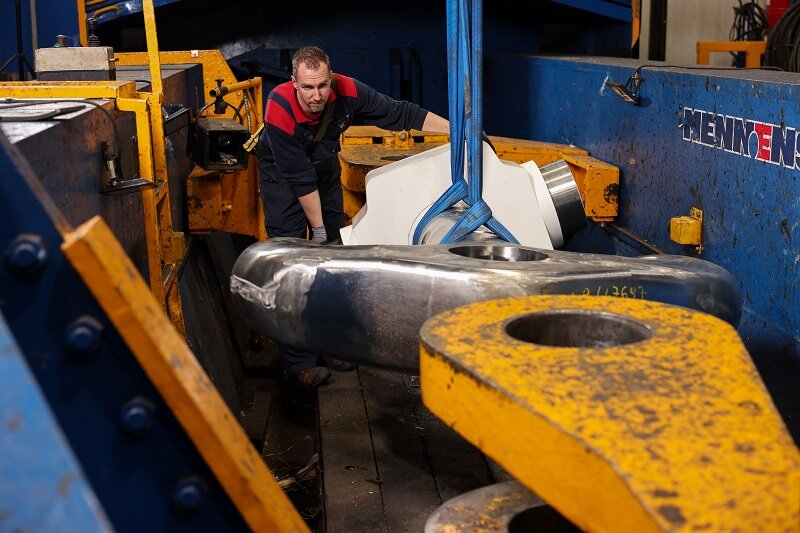Proofload testing of lifting equipment
in Mennens' powerful (mobile) tensile testing machines
As an organisation, you want to be sure that your lifting equipment is safe and complies with safety standards. But how can you be sure that your lifting equipment actually has the intended working load? For this, you can test the equipment in one of Mennens' powerful, mobile tensile testing machines.
In the video, our experts Mark Braaksma, Twan Keeman and Edwin Sassen talk about the testing process with our tensile testing machines - and what they encounter with lifting equipment in practice.

Proof load and break test
"With the tensile testing machine, we provide tests for customers," Twan Keeman begins. "Both breaking tests and proofload tests." In the proofload test, we test the equipment higher than a working load: this is determined by a factor. In the breaking test, we test the hoisting tool until it breaks. We do this to measure the difference between the actual breaking force and the theoretical breaking force.
Always a tensile testing machine nearby
Each Mennens location has its own tensile testing machine. The tensile testing machine in Dongen can even handle 14,000 kN: this is the largest capacity in the Benelux. Twan: "We test for instance Dyneema slings, shackles, steel wire ropes, underblocks (single-sheave, double-sheave) and construction work from customers. For example, we first go to a certain force three times. Then to continue to break."
Flexibility of mobile tensile testing machines
Mennens also has mobile tensile benches. Edwin: “Many customers choose for this. The big advantage of this is that it takes less time, as the materials do not have to move away from the site. This also means the resources are not out of use for longer than necessary."
Yet sometimes a fixed tensile bench is necessary, explains Mark Braaksma. "With a mobile pull bench, you are bound to a maximum capacity. As a result, you sometimes have to switch to a large, fixed tensile bench with a higher capacity."
In some cases, for safety or practicality, it is better to use water bags to carry out a test. This is especially practical for lifting equipment with a high working load or with a large size.
Certain of safety
Practice proves that tensile tests are very important. Mark concludes: "Customers regularly have tested lifting equipment that has already been used many times. During our test, we then often find that they are indeed no longer safe to use. For example, we recently tested a beam that had always been in use. During our test, the beam completely failed. We are talking about a capacity of thirty tons. These are serious weights. In which, fortunately, things go wrong in the test setup and not on site."
More information?
Want more information about testing your lifting equipment? Or schedule a tensile test right away?





